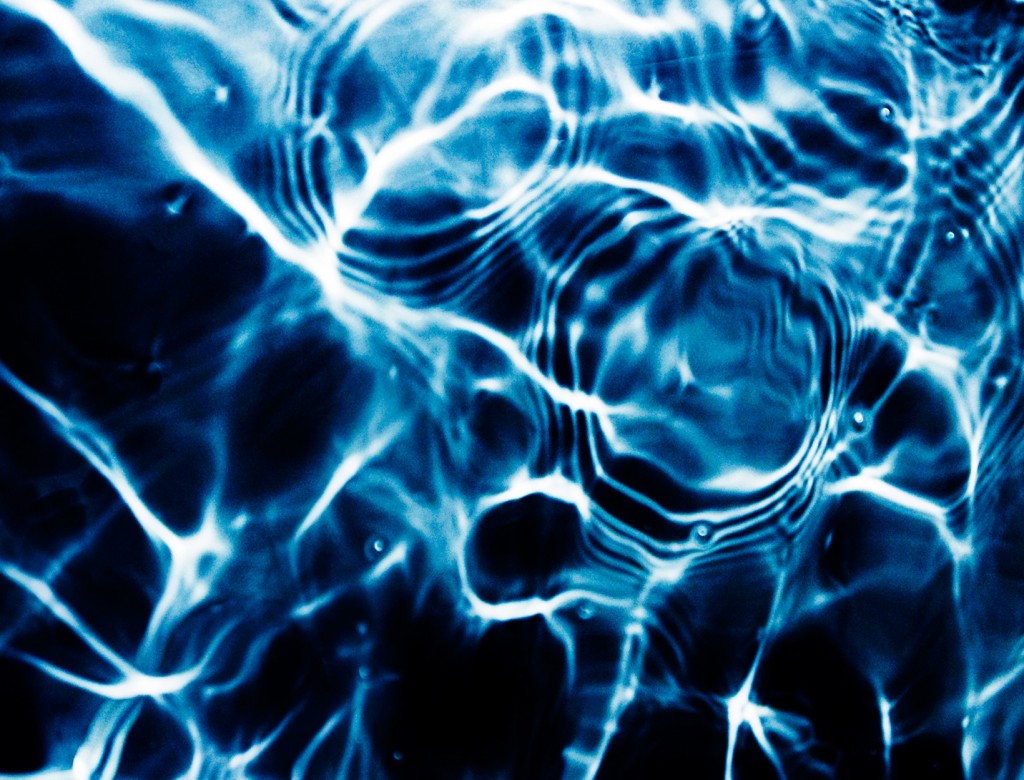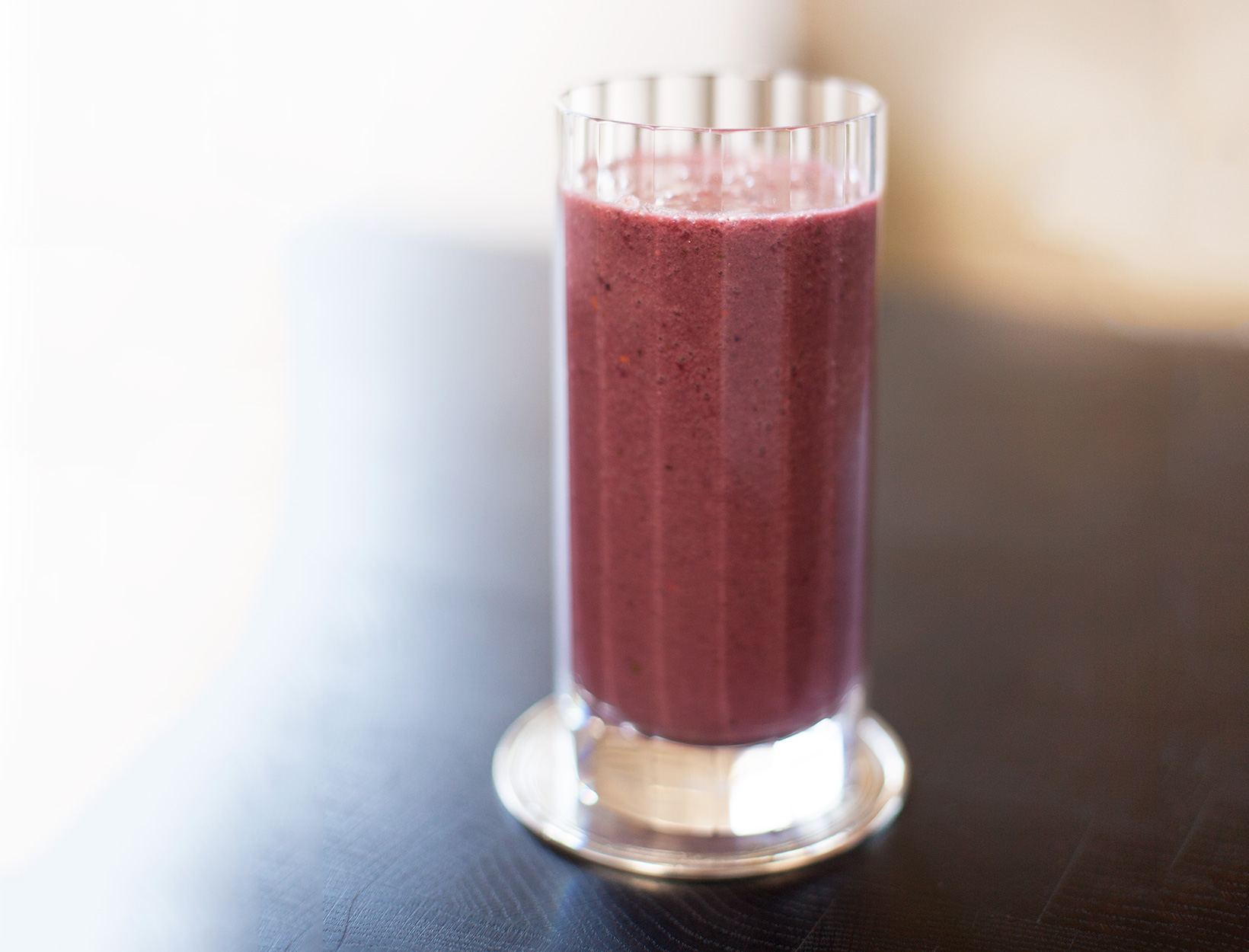You’ve Been Doing It Wrong: Why You’re Still Dehydrated
Written by: the Editors of goop
|
Updated on: June 15, 2017
|
Reviewed by: Gina Bria and Dr. Dana Cohen

Anthropologist-turned-health-coach Gina Bria stumbled upon the concept of gel water when she was searching for ways to better hydrate her aging mother—but she says what she uncovered may completely change the way we think about water, challenging the conventional “eight glasses a day” wisdom.
The concept of gel water was originally discovered by bioengineer Dr. Gerald Pollack at his eponymous water science laboratory at the University of Washington. His book, The Fourth Phase of Water: Beyond Solid, Liquid, and Vapor, resonated with Bria’s thesis work on desert-society survival techniques: “The Incas and the Aztecs would go for weeks without water, subsisting only on chia and cacti—which, it turns out, are full of gel water,” says Bria. Pollack estimates that this previously unknown form of water (found in vegetables, chia seeds, and other foods) makes up more than 90 percent of the water in our own bodies, but there had been little work done to apply those findings to human health practices.
In their forthcoming book, Quench: Reclaim your Energy and Health with the New Science of Hydration, Including Your Five-Day Plan to Hydrate, Bria and functional doctor Dana Cohen, M.D. explore the science of gel water, as well as its (far-reaching) implications. Because gel water is transmitted through the body via our fascia, understanding it can potentially deepen our knowledge of both collagen and fascia, the ways we store water in our bodies, and the role of electricity in body function. Here, Bria and Cohen talk about the anthropological, medical, and practical impacts of gel water—along with how to incorporate it into your routine:
A Q&A with Gina Bria & Dana Cohen, M.D.
Q
What is gel, or structured water?
A
Gel water, also called structured, ordered, liquid crystalline, or living water, is a newly identified phase of water that’s not quite liquid, vapor, or ice. Gel water is identified by an extra hydrogen and oxygen atom, so the molecular structure is H302. It’s a highly conductive molecular structure, as the extra hydrogen atoms are constantly moving back and forth between molecules, generating electricity. In this phase, water crystals overlap and interlink like lace or crocheted netting, the way snowflakes do. But unlike snowflakes, which are stationary, gel water creates this structure while remaining in a fluid state. It is not temperature that defines gel water, so much as its shifting molecular structure.
Many people ask if gel water is in a plasma state. While gel water is conceptually similar to plasma, it is highly organized (crystalline-like)—unlike plasma, which has no distinct structure. Gel water can be as thin as liquid, just slightly more silky, or it can develop to be as thick as jello. You know the gel-like substance that forms around chia seeds when you soak them in water? That’s water in the gel phase.
Q
How did you learn about it?
A
Gina’s ninety-year-old mom was living in a nursing home and suffering from chronic dehydration. She wasn’t drinking enough water to stay healthy. Gina did her anthropology research on desert cultures, and knew that many desert-dwelling people subsisted on far less than eight glasses a day, consuming specialized plants like cactus and chia. After some testing, she sent her mother ground-up, pulverized chia seeds that could be stirred into her orange juice each morning. It largely solved her mom’s issue.
This was the starting point for understanding not only the anthropology behind plant water use, but also the science. Gina searched for colleagues who could help explain why the chia seeds worked so well, and over the last six years has crossed disciplinary lines like biology, chemistry, physics, and now quantum nanoparticle and wave excitation to better understand gel water structure. At the very beginning of her search, Gina stumbled across Dr. Gerald Pollack, a professor of bioengineering who runs the Pollack Laboratory at the University of Washington. He introduced her to his research on gel water at the molecular level, and how it might help explain her mother’s positive reaction to the chia.
Q
What are the health implications of this discovery?
A
Dr. Pollack documented that the water in our synovial fluid, joint fluid, and, importantly, our cells, is gel water. Think of your cells as tiny ziplock bags full of jello-like gel water, which keep our cells and tissues in the proper shape and buoyancy. Pollack’s work suggests that gel water is more hydrating than liquid water, because its unique electrical charge allows our systems to operate more efficiently, and its absorptive qualities help the body retain water. Some studies have indicated that liquid water alone is not sufficient for hydration—as evidenced by cases where subjects couldn’t achieve hydration despite over-drinking.
Gel water also has important implications for our understanding of the way water is distributed throughout the body. We have traditionally understood that water gets distributed via the bloodstream and lymphatic system, but the discovery of gel water suggests that fascia is also a critical system for water distribution. Fascia is made of collagen (which is full of gel water) and elastin, acting like a hydraulic system that pumps and distributes water more deeply into your tissues. When you move your connective tissue through exercise, it facilitates the movement of water throughout the body.
Gel water also conducts electricity in the body far more efficiently than regular water because of its density and its unique, constantly changing structure. Foods containing electrolytes (like coconut, ghee, and chocolate), which release electrical charge when they begin to dissolve inside the body, start a cascade of hydrogen-bonding that triggers the creation of more gel water and, consequently, better hydration.
Q
How does this change thinking on hydration?
A
For many years, we’ve operated with the assumption that the path to hydration was drinking eight glasses of water daily. Based on Dr. Pollack’s discoveries, we know the picture is actually much more complex—in fact, health practitioners should be taking a much closer look at a person’s entire diet to get a full picture of their hydration.
Q
How can we consume more gel water?
A
-
Incorporate as many fruits and vegetables in your diet as you can. Not only are they full of gel water themselves, but they also contain naturally occurring electrolytes, and their fiber helps the body absorb gel water. For those reasons, a green juice or smoothie is actually more hydrating than a bottle of water.
-
Add lime to water; the electrolytes help encourage the production of gel water.
-
Toss a pinch of sea salt or rock salt (Himalayan pink salt works well) into your water bottle. The electrolytes help encourage the production of gel water.
-
Drink and cook with bone broth, which is full of collagen (which is full of gel water).
-
Add a teaspoon of crushed chia seeds to smoothies and other drinks. By crushing up the seeds, you create more surface area, and eventually more gel.
-
Try cooking with coconut and ghee, which are both full of gel water and electrolytes.
Q
Does consuming enough gel water eliminate the need for regular water?
A
Gel water doesn’t eliminate the need for regular water, but it does reduce it. We’re not sure of the magnitude yet, and it will vary for each individual, but what we do know is that the absorptive qualities of gel water, combined with its conductivity, are excellent for hydration. We also know that people who are better hydrated have increased cell function, energy, and mental function.
Q
We’ve heard that infrared saunas, counterintuitively, can boost hydration—can you explain?
A
Infrared saunas use light waves in the red wave spectrum range. In that range, light waves reach the water molecules in our bodies and split them into positive and negative charges, shifting their molecular structure, and creating gel water. The sun also does exactly this same work, and modest exposure is nature’s way of purifying and charging water. We can adapt to our indoor, out-of-the-sun life by using infrared saunas.
Theoretically, the subtle electrical charge of the planet could help split the water molecules around us and inside us as well, so earthing could be another way to boost hydration.

Gina’s Coconut Rose Splendor Smoothie
This recipe is packed with gel water—it’s in the rose leaves (Persian culture has used roses for healing for centuries), basil leaves, and blackberries. The electrolytes in the lime and rock salt help activate the gel water once it’s in the system, and the acidity of the apple cider vinegar helps counteract the sugar in the jam.
As founder of The Hydration Foundation, anthropologist Gina Bria spreads the science of how plants transform liquid water into gel water, and explores how we can have better hydration and water protection worldwide. She has shared the TEDx stage with leading water researchers, Dr. Gerald Pollack of the University of Washington’s Pollack Laboratory, Dr. Stephanie Seneff of MIT, and Algonquin Grandmother Elder, Nan Andry. Her forthcoming book, QUENCH: Reclaim your Energy and Health with the New Science of Hydration, Including A Five-Day Plan to Get You Hydrated, is co-authored with Dana Cohen, M.D.
Dr. Dana Cohen has been an integrative medicine practitioner for more than fifteen years. She trained under Dr. Robert Atkins, author of the iconic Dr. Atkins’ New Diet Revolution, and Dr. Ronald L. Hoffman, founder of the Hoffman Center in New York City. She was recently appointed to the Board of Directors of the American College for the Advancement of Medicine (ACAM), where she is also program director of their bi-yearly symposiums.
The views expressed in this article intend to highlight alternative studies and induce conversation. They are the views of the author and do not necessarily represent the views of goop, and are for informational purposes only, even if and to the extent that this article features the advice of physicians and medical practitioners. This article is not, nor is it intended to be, a substitute for professional medical advice, diagnosis, or treatment, and should never be relied upon for specific medical advice.